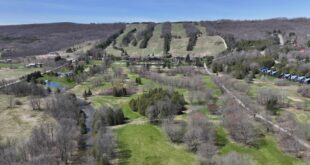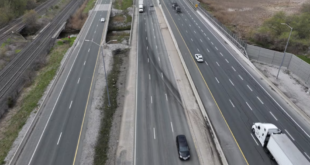Municipal federation says sustained provincial funding required as cities, towns grapple with flooding, fires.

For the past six years, Grand Forks has been busy preparing to avoid what happened in 2018 when a devastating flood destroyed nearly 100 homes.
“Water goes where water wants to and … it was devastating,” said Grand Forks Mayor Everett Baker, whose daughter lost her home during the emergency.
The community, about 520 kilometres east of Vancouver in B.C.’s Southern Interior, is one of many experiencing the threat of climate-related emergencies such as floods or fires and scrambling to be ready for more.
Grand Forks has applied several times to access a pool of money made available from the province and administered by the Union of B.C. Municipalities (UBCM) called the Community Emergency Preparedness Fund (CEPF).
The fund was set up to help keep residents in local communities and First Nations safe from emergencies like floods and wildfires that have become more prominent due to climate change.
However, some people worry the fund may not be able to keep up with demand.
“There’s lots of hands in the pot right now, when we think of the fires and floods that are going on across the province,” said Baker.

In Grand Forks, for example, $1.76 million was used from the fund for flood mitigation along with Kettle River, which included installing 82 fish habitat structures and planting 45,000 trees and shrubs.
Baker said that and other work since 2018 has brought Grand Forks “back to life,” and ultimately saved the city from another flood risk in 2023.
“We went through freshet last year and it worked,” he said, referring to the spring thaw.
.jpg?crop=1.777xh:h;*,*&downsize=510px:*510w)
Flooding risk eases in Grand Forks, B.C.
The CBC’s Tom Popyk tours Grand Forks as water levels hold steady
Since the CEPF’s inception in 2017, around $214 million has been distributed for more than 1,880 projects, the province said in March.
Data from UBCM shows a vast increase in the number of applications made to the fund since it began. Over 2017-18 there were 241 applications for projects, while the latest data available for the 2022-23 intake period had 514.
“There is definitely more demand,” said Trish Mandewo, president of UBCM and a city councillor in Coquitlam. “Some streams in the fund are consistently over-subscribed, meaning that we receive more applications than we do in funding.”
Mandewo said cities, towns and villages are on the front lines of the effects of climate change and will require ongoing support from funds like the CEPF if they are to have a chance at protecting their communities from a worsening climate.
“Climate change is one of the biggest issues we are facing,” she said. “The plans required by the province have become more complex so they’re asking more of us and yet when we ask for more funding we are not getting it.”
Mandewo pointed to the province’s new B.C. Flood Strategy, which is meant to co-ordinate the efforts of all levels of government and First Nations to make the province more resilient to floods by 2035.
A key piece though is a demand by municipalities for the province to take over flood risk governance, such as dike management, was not changed — meaning cities will have to find ways to upgrade the structures on their own.
Many will have to turn to sources such as CEPF for things like this, said Mandewo.
Meanwhile, the province said the fund has been matching demand and increasing its scope. The largest projects, by sum to date, came in 2023, meaning the fund is ramping up for major improvements in at-risk communities.
In 2017, the province put aside $33.5 million for the fund, but annual tops-ups have brought it to nearly $370 million for projects extending into this year.
The ministry said it is committed to “continuing to support communities in their mitigation and preparedness efforts to keep people safe and mitigate the impacts of climate-related emergencies.”
ABOUT THE AUTHOR
Chad Pawson is a CBC News reporter in Vancouver. Please contact him at chad.pawson@cbc.ca.
*****
Credit belongs to : www.cbc.ca
 Atin Ito First Filipino Community Newspaper in Ontario
Atin Ito First Filipino Community Newspaper in Ontario






